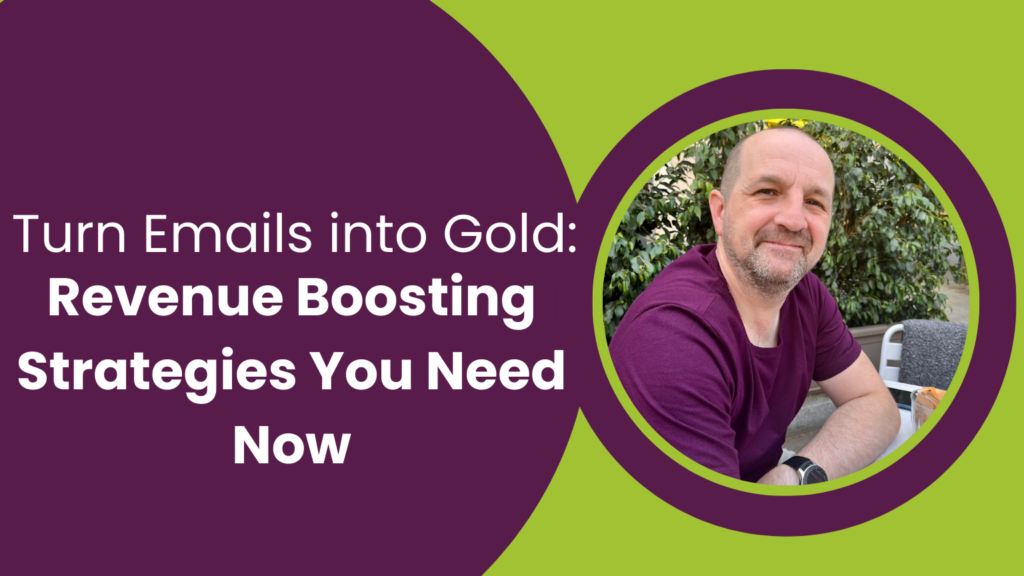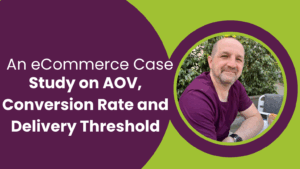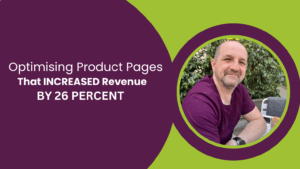
Ever feel like your emails are just floating around in cyberspace, unseen and unopened? You’re not alone. In today’s noisy digital world, cutting through the clutter and turning those sent messages into actual revenue can feel like a Herculean task. But what if there were actionable, straightforward secure email revenue boosting strategies you could implement today to make your emails work harder for you?
Today, we pull back the curtain on the five key strategies used to transform email marketing from a cost centre into a powerful revenue marketing strategy. Whether you’re a small startup or a large e-commerce business, these tips are designed to be easily adopted and deliver real results. Ready to unlock the hidden potential in your inbox?
Crafting Subject Lines That Sizzle and Avoid Spam Filters!
Your subject line is the gatekeeper to your email. It’s the first (and sometimes only) impression you make in a crowded inbox. If it doesn’t grab attention and clearly commuanicate value, your message will likely be lost in the digital void.
Best Practices for Irresistible Subject Lines
- Relevance is King: It sounds obvious, but ensure your subject line accurately reflects the content of your email. No one likes a bait-and-switch!
- Intrigue vs. Pain: Don’t just throw out random subject lines. Strategically AB test different types of hooks. Does your audience respond better to subject lines that highlight a pain point or those that spark curiosity? For example, test “Solve [Problem] Today” against “Unlock a Secret to [Desired Outcome].”
- Strategic AB Testing: Most email marketing platforms (like Klaviyo or Mailchimp) allow you to AB test subject lines. Send two variations to a small segment of your audience, like 20%, and then send the winning subject line or the one with the highest open rate to the rest. This data-driven approach ensures you’re constantly optimising for opens.
- Avoid Spam Triggers: Be mindful of words and formatting that can trigger spam filters. Think twice about excessive use of all caps “SALE!!!”, overly promotional language, and misleading claims.
The Pitfalls of Clickbait
While a high open rate is the initial goal, be cautious of going too far with “open bait.” A misleading subject line might get clicks, but it can also lead to complaints and erode trust with your audience. Ensure the email content delivers on the promise of the subject line. Consistency between your headlines and content builds long-term engagement.

Unlock Deeper Engagement with Audience Segmentation
Thinking your entire email list is one homogenous blob? Think again! Effective email marketing understands that different subscribers have different needs, interests, and buying behaviors. A good email segmentation strategy is the key to delivering more relevant and impactful messages.
Why Segmentation is a Game-Changer
- Tailored Messaging: By grouping your audience based on factors like past purchases, browsing behavior, demographics, or engagement levels, you can send highly targeted emails. Someone who bought outdoor furniture is likely interested in different promotions than someone who purchased indoor lighting.
- Increased Relevance: Relevant content leads to higher open rates, click-through rates, and ultimately, more conversions. Imagine receiving an email about a product you just bought – frustrating, right? Segmentation helps you avoid these missteps.
- Easier Retargeting: Knowing what products or categories a segment has previously engaged with makes retargeting efforts much more effective.
Practical Segmentation Strategies
- Purchase History: Segment based on the types of products purchased (e.g., premium vs. budget brands, specific product categories).
- Buying Behavior: Identify frequent purchasers, high-value customers, or those who haven’t bought in a while.
- Engagement Levels: Segment based on how often subscribers open or click your emails. This helps you identify your most engaged audience and those who might need re-engagement.
The Power of Exclusion
Segmentation isn’t just about who to include; it’s also about who to exclude. For example, if someone recently bought a dining table and chairs, you can exclude them from future emails promoting dining sets for a reasonable period. This shows you’re paying attention to their needs.
Deliverability Matters: Ensuring Your Emails Actually Arrive
You can have the most compelling subject lines and perfectly segmented lists, but if your emails don’t reach the inbox, all your efforts are in vain. Deliverability is a crucial, often technical, aspect of email marketing that needs attention.
The Technical Side of Getting Through
SPF, DKIM, and DMARC Records: These are authentication protocols that help email providers verify that you are who you say you are and that your emails haven’t been tampered with. Implementing these on your domain server is essential to prove you’re not a spammer. You’ll likely need to involve your IT team or marketing agency to set these up.
Reputation is Key: Email providers like Gmail, Yahoo, and Outlook constantly evaluate senders’ reputations based on factors like bounce rates, spam complaints, and engagement. Sending to invalid email addresses or unengaged subscribers can damage your reputation and lead to lower deliverability.
The Revenue Impact of Poor Deliverability
If 20% of your emails aren’t being delivered due to technical issues, that’s an immediate 20% potential revenue loss. Subscribers can’t open what they don’t receive!
Testing Your Deliverability
Utilise free online tools that allow you to send test emails and identify any deliverability issues with your setup. These tools can provide valuable insights into your SPF, DKIM, and DMARC records.

The Importance of List Cleaning
An outdated or unengaged email list is a liability, not an asset. Regularly cleaning your list is vital for maintaining a healthy sender reputation and maximising the impact of your campaigns.
Why List Hygiene is Non-Negotiable
- Improved Deliverability: Sending a high number of invalid or inactive email addresses signals to email providers that you might not be a legitimate sender, harming your deliverability for your entire list.
- Increased Engagement Rates: By removing unengaged subscribers, your open and click-through rates will naturally improve, giving you a more accurate picture of your active audience.
- Cost Savings: Most email marketing platforms charge based on the number of subscribers. Why pay to send emails to people who will never open them?
Practical List Cleaning Strategies
- Identify and Remove Bounces: Regularly remove email addresses that result in hard bounces – permanent delivery failures.
- Target Inactive Subscribers: Segment subscribers who haven’t opened or clicked an email in a significant period (e.g., 6-12 months) and either try a re-engagement campaign or remove them.
- Utilise Platform Tools: Email marketing platforms like Klaviyo and Mailchimp often provide tools to identify inactive subscribers and prompt list cleaning.
The Gentle Re-Engagement Approach
Before outright deleting long-inactive subscribers, consider a targeted re-engagement campaign. Send them a specific email with a compelling offer or a reminder of the value you provide. If they still don’t engage, it’s likely time to let them go.

Know Your “Doris”: The Power of Targeting Your Persona
Ultimately, effective email marketing boils down to understanding who you’re talking to. Creating detailed buyer personas is the foundation for crafting compelling subject lines, relevant content, and successful campaigns.
Beyond Demographics: Creating a Vivid Persona
Don’t just think about age and location. Dig deeper into your ideal customer’s:
- Motivations and Pain Points: What problems are they trying to solve? What are their aspirations?
- Demographics and Psychographics: Age, gender, location, education, income, interests, values, lifestyle.
- Buying Behavior: How do they research products? What influences their purchasing decisions? What are their preferred communication channels?
Imagine your ideal customer – give them a name like “Doris”, picture their life, and ask yourself: “Would Doris care about this email?” This simple exercise can dramatically improve the relevance and effectiveness of your messaging.
Persona-Driven Content and Segmentation
Once you have a clear understanding of your personas, you can tailor your email content and segmentation strategies accordingly. For example, the language and offers you use for a budget-conscious persona will differ significantly from those targeting a premium buyer. Similarly, a B2B persona like “Steve the IT Guy” will have different needs and interests than “Doris the Home User.”
The Compound Effect of Persona Targeting
When you combine deep persona understanding with effective segmentation, deliverability, and list cleaning, the results can be transformative. Even small improvements in each area can lead to a significant increase in overall revenue.
Conclusion
Turning emails into revenue isn’t about sending more emails; it’s about sending the right emails to the right people at the right time. By implementing these five key strategies – crafting compelling subject lines, segmenting your audience, ensuring deliverability, cleaning your list, and deeply understanding your persona – you can move beyond simply reaching inboxes and start driving real, tangible results from your email marketing efforts.
Ready to transform your email strategy? Which of these five strategies will you implement first? Want to discuss how we can help you elevate your digital marketing? Reach out to our experts today!







